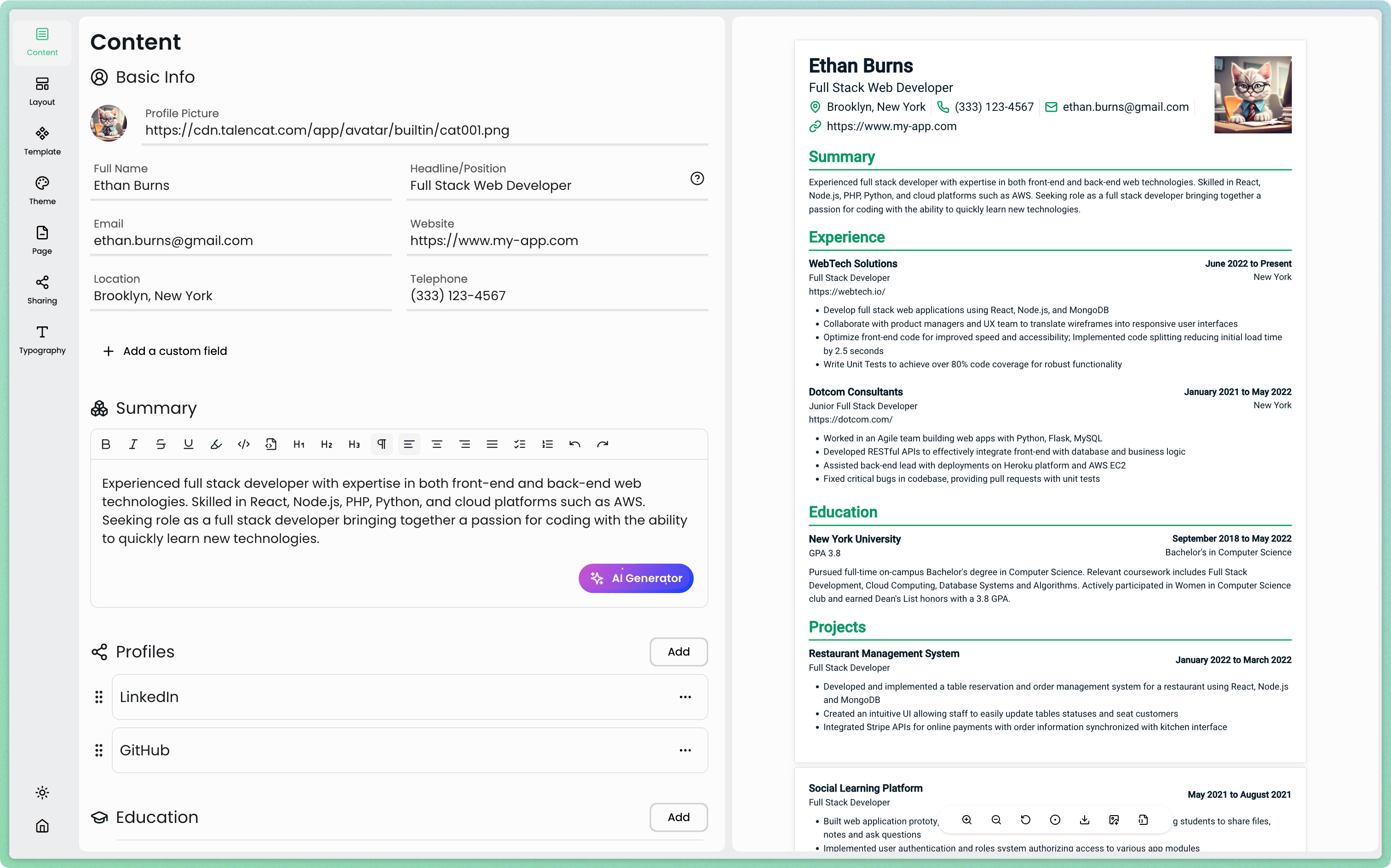In today's data-driven world, organizations are increasingly recognizing the importance of effective data management and analysis. At the heart of this process lies the crucial role of data modelers, professionals who design and structure data systems to ensure optimal performance, accessibility, and security. As businesses continue to generate vast amounts of data, the demand for skilled data modelers has grown significantly, making it an attractive career path for those with a passion for data and technology.
This comprehensive guide delves into the world of data modeler jobs, providing valuable insights for both aspiring professionals and employers seeking to understand the role's significance. From entry-level positions to senior roles, we'll explore the various types of data modeler jobs, the skills and qualifications required, and the current job market trends. Whether you're considering a career in data modeling or looking to hire a data modeler for your organization, this article will serve as an essential resource to navigate the landscape of data modeling careers.
Also Read:


Introduction to Data Modeler Jobs
Data modeling is a critical component of modern business operations, serving as the foundation for effective data management and analysis. To understand the role of a data modeler and its importance in organizations, let's start by defining the profession and exploring its significance.

Definition of a Data Modeler
A data modeler is a professional responsible for creating, maintaining, and optimizing data models that represent an organization's information systems. These models serve as blueprints for database structures, ensuring that data is organized efficiently and can be easily accessed, analyzed, and utilized by various stakeholders within the company.
Data modelers work closely with business analysts, database administrators, and software developers to design and implement data structures that meet both technical requirements and business needs. They play a crucial role in translating complex business requirements into logical and physical data models that can be implemented in database systems.
Importance of Data Modeling in Organizations
The significance of data modeling in organizations cannot be overstated. As businesses increasingly rely on data-driven decision-making, the need for well-structured and organized data becomes paramount. Here are some key reasons why data modeling is essential:
- Improved data quality: Data models help ensure consistency and accuracy in data storage, reducing errors and redundancies.
- Enhanced data accessibility: Well-designed data models make it easier for users to access and retrieve the information they need quickly and efficiently.
- Better decision-making: By providing a clear and organized view of an organization's data, data models enable more informed and timely decision-making.
- Increased efficiency: Properly structured data reduces the time and resources required for data management and analysis tasks.
- Compliance and security: Data models help organizations meet regulatory requirements and implement robust security measures to protect sensitive information.
- Scalability: As organizations grow and evolve, well-designed data models can accommodate changes and expansions more easily.
Given the critical role that data modeling plays in modern business operations, the demand for skilled data modelers continues to grow across various industries.
Types of Data Modeler Roles
The field of data modeling offers a range of career opportunities, from entry-level positions to senior roles and specialized positions in specific industries. Understanding these different roles can help aspiring data modelers chart their career paths and identify the areas where they can best apply their skills and interests.
Entry-Level Data Modeler Positions
Entry-level data modeler positions serve as a starting point for professionals entering the field. These roles typically require a basic understanding of data modeling concepts and some familiarity with database systems. Common entry-level positions include:
- Junior Data Modeler: Assists senior data modelers in creating and maintaining data models, learning the ropes of the profession.
- Data Modeling Analyst: Focuses on analyzing existing data structures and proposing improvements to enhance data organization and accessibility.
- Data Modeling Associate: Works on smaller projects or specific components of larger data modeling initiatives under the guidance of more experienced team members.
Entry-level positions often involve tasks such as documenting existing data structures, creating simple data models, and assisting in the implementation of data modeling solutions. These roles provide valuable hands-on experience and opportunities to learn from more seasoned professionals.
Senior Data Modeler Roles
As data modelers gain experience and expertise, they can progress to senior roles that involve greater responsibility and more complex projects. Senior data modeler positions typically include:
- Senior Data Modeler: Leads data modeling projects, designs complex data structures, and mentors junior team members.
- Lead Data Modeler: Oversees multiple data modeling initiatives, coordinates with various stakeholders, and ensures alignment between data models and business objectives.
- Data Modeling Architect: Develops enterprise-wide data modeling strategies, establishes best practices, and guides the overall direction of data modeling efforts within an organization.
Senior roles often require a deep understanding of various data modeling techniques, extensive experience with different database systems, and strong leadership and communication skills. These positions may also involve collaborating with executive-level stakeholders to align data modeling efforts with broader business strategies.
Specialized Data Modeler Positions
Many industries have unique data modeling requirements, leading to specialized data modeler roles tailored to specific sectors. Some examples include:
- Financial Sector Data Modeler: Focuses on designing data models for financial institutions, dealing with complex financial data structures, regulatory requirements, and risk management systems.
- Healthcare Data Modeler: Specializes in creating data models for healthcare organizations, addressing challenges related to patient data, medical records, and compliance with healthcare regulations such as HIPAA.
- E-commerce Data Modeler: Develops data models for online retail platforms, focusing on product catalogs, customer data, and transaction processing systems.
- Government Data Modeler: Works on data modeling projects for government agencies, dealing with large-scale data systems, public records, and specific government regulations.
- Telecommunications Data Modeler: Specializes in creating data models for telecom companies, addressing challenges related to network infrastructure, customer data, and billing systems.
These specialized roles often require industry-specific knowledge in addition to core data modeling skills. They provide opportunities for data modelers to apply their expertise in unique and challenging contexts, often commanding higher salaries due to their specialized knowledge.
Skills and Qualifications Required
To excel in a data modeler role, professionals need to possess a combination of technical expertise and soft skills. These skills enable data modelers to design effective data structures, communicate with stakeholders, and contribute to the overall success of data management initiatives within an organization.
Technical Skills
The technical skills required for data modeler positions form the foundation of their expertise. These skills encompass a range of areas related to database systems, data modeling tools, and data architecture.
Knowledge of Database Systems
A strong understanding of various database systems is crucial for data modelers. This knowledge typically includes:
- Relational Database Management Systems (RDBMS): Proficiency in popular RDBMS platforms such as Oracle, Microsoft SQL Server, MySQL, and PostgreSQL.
- NoSQL Databases: Familiarity with non-relational database systems like MongoDB, Cassandra, or Redis, especially for handling unstructured or semi-structured data.
- Data Warehousing: Understanding of data warehouse concepts, architectures, and technologies like Amazon Redshift or Google BigQuery.
- SQL: Advanced knowledge of Structured Query Language (SQL) for querying, manipulating, and managing data.
Proficiency in Data Modeling Tools
Data modelers must be adept at using various data modeling tools to create, visualize, and maintain data models. Some popular tools include:
- ERwin Data Modeler: A comprehensive data modeling tool for creating logical and physical data models.
- ER/Studio: A collaborative data modeling and architecture platform.
- PowerDesigner: SAP's data modeling and enterprise architecture tool.
- Lucidchart: A web-based diagramming tool that can be used for creating entity-relationship diagrams.
- Visual Paradigm: An all-in-one modeling platform that includes data modeling capabilities.
Proficiency in these tools allows data modelers to efficiently create, modify, and document data models, as well as generate database schemas and documentation.
Understanding of Data Architecture
A solid grasp of data architecture principles is essential for data modelers to design scalable and efficient data structures. This includes knowledge of:
- Data modeling techniques: Conceptual, logical, and physical data modeling methodologies.
- Normalization and denormalization: Understanding when and how to apply these techniques to optimize data structures.
- Data integration: Familiarity with ETL (Extract, Transform, Load) processes and data integration patterns.
- Data governance: Knowledge of data quality, metadata management, and data lineage concepts.
- Big data architectures: Understanding of distributed computing frameworks like Hadoop and Spark for handling large-scale data processing.
Soft Skills
While technical skills are crucial, soft skills play an equally important role in the success of a data modeler. These skills enable effective communication, problem-solving, and collaboration within teams and across departments.
Analytical Thinking
Data modelers must possess strong analytical skills to:
- Identify patterns and relationships within complex data structures.
- Evaluate business requirements and translate them into effective data models.
- Troubleshoot issues and optimize existing data models for improved performance.
- Anticipate future data needs and design scalable solutions.
Communication Skills
Effective communication is vital for data modelers, as they often serve as a bridge between technical and non-technical stakeholders. Key communication skills include:
- Ability to explain complex technical concepts to non-technical audiences.
- Active listening to understand business requirements and stakeholder needs.
- Clear and concise written communication for documentation and reporting.
- Presentation skills for showcasing data models and their benefits to various audiences.
Collaboration with Development Teams
Data modelers frequently work as part of larger development teams, making collaboration skills essential. This involves:
- Ability to work effectively in cross-functional teams.
- Openness to feedback and willingness to iterate on designs.
- Conflict resolution skills to address differing opinions on data modeling approaches.
- Adaptability to work with different development methodologies (e.g., Agile, Waterfall).
By combining these technical and soft skills, data modelers can effectively design, implement, and maintain data models that meet the needs of their organizations while fostering productive relationships with colleagues and stakeholders.
Data Modeler Job Market Overview
The job market for data modelers has been experiencing significant growth in recent years, driven by the increasing importance of data in business decision-making and operations. Understanding the current job market trends, availability statistics, and geographic distribution of data modeler jobs can help professionals make informed career decisions and organizations plan their hiring strategies effectively.
Current Job Market Trends
Several trends are shaping the data modeler job market:
- Increased demand: As organizations continue to recognize the value of well-structured data, the demand for skilled data modelers is on the rise.
- Integration with data science: There's a growing overlap between data modeling and data science roles, with some positions requiring skills in both areas.
- Cloud-based data modeling: With the shift towards cloud computing, there's an increasing need for data modelers familiar with cloud-based data platforms and architectures.
- Industry-specific expertise: Many organizations are seeking data modelers with domain knowledge in specific industries, such as finance, healthcare, or e-commerce.
- Emphasis on data governance: As data privacy regulations become more stringent, there's a greater focus on data governance skills within data modeling roles.
Job Availability Statistics
While specific statistics can vary depending on the source and time frame, several indicators point to a strong job market for data modelers:
- Growth rate: According to the U.S. Bureau of Labor Statistics, the employment of database administrators and architects (which includes data modelers) is projected to grow 9% from 2021 to 2031, faster than the average for all occupations.
- Salary trends: The average salary for data modelers in the United States ranges from $80,000 to $120,000 per year, with senior roles commanding even higher salaries.
- Job postings: Major job boards consistently show thousands of open positions for data modelers and related roles across various industries.
- Skills gap: Many organizations report difficulty in finding qualified data modeling professionals, indicating a skills gap that presents opportunities for those entering the field.
Geographic Distribution of Data Modeler Jobs
Data modeler jobs are available across various locations, with some regions showing higher concentrations of opportunities:
- Technology hubs: Cities known for their tech industries, such as San Francisco, Seattle, and Austin, often have a high number of data modeler positions.
- Financial centers: New York, London, and other major financial hubs offer numerous opportunities in the financial services sector.
- Healthcare clusters: Cities with significant healthcare and pharmaceutical industries, like Boston and Research Triangle Park in North Carolina, have a demand for healthcare-focused data modelers.
- Government centers: Washington D.C. and state capitals often have data modeling positions in government agencies and related organizations.
- Remote opportunities: The trend towards remote work has expanded the geographic reach of data modeling jobs, allowing professionals to work for companies based in different locations.
- International markets: Countries with growing tech sectors, such as India, Canada, and Germany, are also seeing an increase in data modeling job opportunities.
While these areas tend to have higher concentrations of data modeler jobs, opportunities can be found in various locations as organizations across industries recognize the importance of effective data management.
The robust job market for data modelers reflects the growing importance of data in modern business operations. As organizations continue to invest in data-driven decision-making and advanced analytics, the demand for skilled data modelers is likely to remain strong in the foreseeable future.
Job Responsibilities of a Data Modeler
Data modelers play a crucial role in ensuring that an organization's data is structured, organized, and accessible in a way that supports business objectives and decision-making processes. Their responsibilities span various aspects of data management, from design to implementation and maintenance. Let's explore the key job responsibilities of a data modeler in detail.
Designing Data Models
The primary responsibility of a data modeler is to create and maintain data models that accurately represent an organization's information systems. This process involves:
- Conceptual modeling: Developing high-level representations of data structures and relationships, often using entity-relationship diagrams (ERDs).
- Logical modeling: Translating conceptual models into more detailed structures, defining entities, attributes, and relationships without considering specific database technologies.
- Physical modeling: Creating database-specific models that take into account the particular DBMS being used, including tables, columns, indexes, and constraints.
- Normalization and denormalization: Applying normalization techniques to eliminate data redundancy and improve data integrity, while also considering denormalization when necessary for performance optimization.
- Data warehouse modeling: Designing dimensional models for data warehouses, including fact tables and dimension tables for efficient reporting and analysis.
- Metadata management: Defining and maintaining metadata to provide context and meaning to the data structures.
Collaborating with Stakeholders
Data modelers must work closely with various stakeholders to ensure that data models meet both technical requirements and business needs. This collaboration involves:
- Gathering requirements: Meeting with business analysts, subject matter experts, and end-users to understand data needs and use cases.
- Translating business requirements: Converting business needs into technical specifications for data structures.
- Presenting models: Demonstrating data models to stakeholders and explaining their structure and benefits.
- Iterating designs: Incorporating feedback from stakeholders and refining models based on evolving requirements.
- Coordinating with IT teams: Working with database administrators, developers, and other IT professionals to ensure smooth implementation of data models.
- Advising on data strategy: Providing input on overall data management strategies and best practices.
Ensuring Data Quality and Integrity
Maintaining the quality and integrity of data is a critical aspect of a data modeler's role. This responsibility includes:
- Defining data quality rules: Establishing standards and constraints to ensure data accuracy, consistency, and completeness.
- Implementing data validation: Designing and implementing validation rules and checks within the data model.
- Monitoring data quality: Regularly assessing the quality of data within the implemented models and identifying areas for improvement.
- Data cleansing: Collaborating with data stewards and analysts to address data quality issues and implement cleansing processes.
- Ensuring data consistency: Designing models that maintain data consistency across different systems and applications.
- Compliance and security: Incorporating data privacy and security requirements into the data model design.
Documentation and Implementation of Data Models
Proper documentation and implementation are crucial for the long-term success of data modeling efforts. Data modelers are responsible for:
- Creating comprehensive documentation: Developing detailed documentation of data models, including entity definitions, attribute descriptions, and relationship explanations.
- Maintaining model repositories: Organizing and maintaining a centralized repository of data models for easy reference and version control.
- Generating database scripts: Creating SQL scripts or using data modeling tools to generate database creation and modification scripts.
- Supporting implementation: Assisting database administrators and developers in implementing the designed data models in production environments.
- Versioning and change management: Managing different versions of data models and coordinating changes across various environments (development, testing, production).
- Performance tuning: Collaborating with database administrators to optimize data models for improved query performance and efficiency.
- Training and knowledge transfer: Educating other team members on data modeling concepts, tools, and best practices.
By fulfilling these responsibilities, data modelers ensure that an organization's data is structured in a way that supports efficient storage, retrieval, and analysis. Their work forms the foundation for effective data management, enabling businesses to leverage their data assets for improved decision-making and operational efficiency.
Crafting a Data Modeler Resume with TalenCat CV Maker
As a data modeler, your resume is crucial in showcasing your skills and experience. TalenCat CV Maker offers an intuitive platform to create a professional resume tailored for data modeling positions. Follow this step-by-step guide to build a compelling resume that highlights your expertise in data modeling.
Step 1: Log in to TalenCat CV Maker and initiate your resume creation process by clicking the "+ Create Resume" button in the top right corner.

Step 2: Name your resume, focusing on your data modeling expertise. Choose to start from scratch or use a pre-existing template tailored for data professionals.

Step 3: Utilize the reactive CV editor to input your information. As you type, you'll see real-time updates in the preview panel, allowing you to craft the perfect data modeler resume.

Step 4: Leverage TalenCat's AI-powered features to enhance your resume. The platform can suggest improvements and help you highlight key data modeling skills and experiences.

Once you've completed your data modeler resume, you can easily export it as a PDF or image file. TalenCat CV Maker also offers an online sharing feature, allowing you to generate a shareable link for your resume – perfect for quickly sending to potential employers in the data modeling field.
Remember to emphasize your expertise in data modeling techniques, familiarity with relevant software and databases, and any significant projects or achievements in your field. With TalenCat CV Maker, you can create a standout resume that showcases your data modeling skills and helps you land your dream job.
Career Path and Advancement Opportunities
Progression from Data Modeler to Data Engineer
Many data modelers find that their skills and experience naturally lead them towards roles in data engineering. This progression often
Transitioning to Related Roles (e.g., Database Administrator)
Data modelers may also consider transitioning to related roles such as database administrators, where they can leverage their understanding of data structures and management to oversee database systems and ensure their performance and security.
Continuing Education and Certifications
To enhance their career prospects, data modelers can pursue continuing education and certifications in relevant areas. Certifications in specific database technologies, data modeling tools, or data governance can help professionals stand out in the job market and demonstrate their expertise.
Job Search Resources
Popular Job Boards for Data Modeler Positions
Several job boards specialize in data-related positions, making it easier for data modelers to find job opportunities. Websites like LinkedIn, Indeed, Glassdoor, and specialized tech job boards often list numerous openings for data modelers across various industries.
Networking Opportunities
Networking is a crucial aspect of job searching in the data modeling field. Professionals can attend industry conferences, workshops, and meetups to connect with other data professionals, share knowledge, and learn about job openings.
Online Communities and Forums
Participating in online communities and forums dedicated to data modeling and data management can provide valuable insights and job leads. Platforms like Reddit, Stack Overflow, and specialized LinkedIn groups allow data modelers to engage with peers, ask questions, and share experiences.
Interview Process for Data Modeler Positions
Common Interview Questions
During interviews for data modeler positions, candidates can expect questions that assess their technical knowledge, problem-solving abilities, and understanding of data modeling concepts. Common questions may include:
- Can you explain the differences between conceptual, logical, and physical data models?
- How do you approach normalization and denormalization in data modeling?
- Describe a challenging data modeling project you worked on and how you overcame obstacles.
Assessment Techniques
Employers may use various assessment techniques to evaluate candidates' skills, including technical tests, case studies, or practical exercises that require candidates to design a data model based on given requirements.
Tips for Successful Interviews
To succeed in interviews for data modeler positions, candidates should:
- Prepare by reviewing data modeling concepts and tools.
- Practice explaining technical concepts in simple terms for non-technical stakeholders.
- Showcase relevant projects and experiences in their portfolios.
- Demonstrate strong analytical and problem-solving skills during discussions.
Conclusion
Future of Data Modeling Jobs
The future of data modeling jobs looks promising, with the increasing reliance on data-driven decision-making across industries. As organizations continue to prioritize effective data management, the demand for skilled data modelers is expected to grow.
Final Thoughts on Pursuing a Career as a Data Modeler
Pursuing a career as a data modeler can be a rewarding path for individuals passionate about data and technology. With the right skills, qualifications, and a commitment to continuous learning, aspiring data modelers can find numerous opportunities for growth and advancement in this dynamic field.




